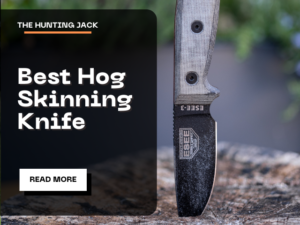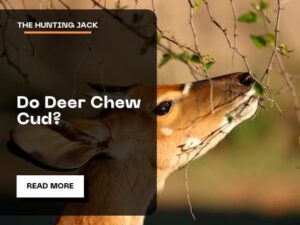So, are deer nocturnal? Well, every species of deer displays both daytime and nighttime behavior. So they’re not exclusively nocturnal. Deer show evidence of being crepuscular. And crepuscular hours are at dawn or dusk.
So, deer are a bit of a peculiar mixture. But before I get into that, let me start by defining nocturnal, crepuscular, and diurnal:
Table of Contents
ToggleThe Difference Between Nocturnal, Diurnal, And Crepuscular Animals
When answering “are deer nocturnal,” it’s essential to define what this means. Exclusively nocturnal animals are those that stay awake during the night. They also sleep during daytime hours. For example, owls are purely nocturnal.
Diurnal animals are active during the day and sleep at night. Humans, for example, would typically be considered diurnal. I say typically because there are those of us who live atypically, either because of work or because they enjoy living that way. But most people sleep at night and are up during the day. Dogs are another great example of a diurnal animal.
Crepuscular animals, on the other hand, are active at the twilight hours of dawn and dusk. And there’s a good reason they’re like this. Deer and other crepuscular species can avoid peak predator activity by only going out during the least active hours.
In addition, it’s hard to see during these hours, while deer have excellent night vision (but poor overall eyesight and less visual acuity than humans). Prey animals such as deer have extra opportunities to hide from and escape predators.
Deer are unusual mammals because they tend to sleep for short periods at any time. They also sleep several different times throughout a 24-hour cycle, but more so during the day. They’re biologically wired to avoid hunters and predator activity.
The Different Species of Deer
While there are different species of deer, it’s still safe to say that they all have more or less the same type of nocturnal behavior. White-tailed deer are known as crepuscular and nocturnal, as are mule deer and elk. There’s very little difference.
Even moose are known for being active during crepuscular hours and having an unusual sleep cycle. Prey animals typically have unusual sleeping patterns to cope with predators.
Are Deer Nocturnal? What They Do At Night
Deer tend to come out at night to avoid the risk of being hunted during the day. Deer have poor eyesight, so typically, you’ll find them grazing in the evening to avoid the risk of attack.
In addition, deers will likely attempt to mate at night as they’re vulnerable during this time and are trying to avoid predators (although erratic behavior has been observed during mating season, which I’ll explain later). It’s also easier to keep from being disturbed during courtship rituals at night.
What Do Deer Do During The Day?
During the day, deer will likely be incredibly cautious as they’re instinctively aware that their risk of being killed by predators is very high. They’ll probably also move towards dense cover to hide from predators. This means that deer are tough to spot during daylight hours.
You can expect deer activity to increase if the sky is mainly cloudy (and if it’s not raining). In addition, if it’s windy, they’re also likely to be less active and more likely to remain hidden.
Factors That Influence Deer Behavior
The behavior of most deer, such as the white-tailed deer, is influenced by numerous factors. However, I’ve pinpointed that these two variables influence them the most:
Weather Conditions
This is a huge variable that influences how a deer may behave. Most deer will shift around their usual behavior during heavy rain or wind. So if they cannot get to a place where they can feed during the evening, they’ll likely feed during daylight hours.
Understanding the weather patterns of the last few days will go a long way to helping you determine how a deer might behave and if there’s a chance of abnormal behavior.
During times of extended cold weather, such as during winter, you may even find deer out in the open during daylight hours (although in large numbers) so that they can get the food they need to survive.
Although it’s more likely that deer eat and store away all the fat they need to survive the winter during autumn (I’ll cover this in more detail soon) as the cold weather makes it harder for plant life to thrive.
Mating Season
Alternatively, you may find that deer, such as white-tailed deer, exhibit abnormal behavior during mating season. There’s a good chance you’ll see deer active during the day (although, as I’ve already mentioned, they tend to mate during the evening) as they search for a female deer, known as a doe, in heat.
Deer Behavior According to Seasons
During autumn, you’re much more likely to find deer scrambling about, which might be the perfect time to go hunting. Not only are deer in their mating season, but they’re also likely to go out in the open to eat more often as they prepare for winter.
During winter, hunting may prove profoundly tricky as they’ll eat less and are likely to generally slow down activity to conserve their energy. Deer attempt to survive on the fat they’ve stored over autumn.
During spring, you’re likely to see an increase in deer activity as they reacquaint themselves with the environment. However, it may take a few weeks after winter before you see any significant increases in activity.
During summer, the primary change in deer activity is where they spend time. They’re likely to try to find water sources and stick around these areas more so than during other seasons.
Hunting Season
While the above information may be helpful during a hunt, bear in mind (and as you probably already know) hunting season varies from state to state. So when you can hunt, the relevance of this information depends on where you live.
Be sure to check your state’s hunting season before presuming that it’s legal to do so.
Other Factors That May Influence Behavior
Aside from the weather, seasons, and mating seasons, various other factors influence deer behavior:
- Human behavior: the way a deer acts depends very much on its environment. If humans are incredibly active during daytime hours, close to where they are, this will encourage more nocturnal behavior.
- Predator behavior: like human behavior, the predators in the area will influence how deer act. For example, if there are cheetahs, who are also crepuscular, then deer may adapt and find times to feed when cheetahs aren’t active.
- Species of deer: the types of deer in your area influence what type of behavior you should expect. White-tailed deer, unlike other deer, are solitary and are less likely to be found in herds, for instance.
- Geographical location: The location of deer will influence how they behave as the usual weather conditions, availability of food and water, and predators in the area will differ.
How Long Do Deer Sleep For?
Deers tend to sleep in places where they feel safe, which is a problem because they rarely feel safe. This means that deer tend to regularly change where they sleep and only sleep for short periods. They even sleep with their eyes open.
What deer do is more akin to what we consider “catnapping” and a strange form of it. Can you imagine sleeping with your eyes open? While we take the expression “sleeping with one eye open” metaphorically, deer take this quite literally and then take it up one step.
Deer will consider the following when contemplating where to sleep:
- How camouflaged they are,
- The availability of entrances and exits,
- And any possible threats in the area.
Given their constant alertness to predators, deers tend to only sleep for a few minutes at a time (while some will argue that it’s hard to gauge because they can sleep with their eyes open).
Hunting Deer
So, while deer can be found anytime during daylight hours, they’ll likely be slightly more active during the evening to avoid predators. This means that you’re going to have to get creative when thinking about how you’re going to hunt them; here are some suggestions:
- Wait for the mating season: this is a great time to catch deer off-guard as their behaviors become more erratic, and they’re easier to spot during the day.
- Hunt at dawn and dusk: Also known as the twilight hours, it’s well understood that deer are the most active during these times, so it’d be a good idea to try your luck then. There’s also some reason to show that deer are more active during a full moon. You’ll find that nocturnal deer behavior is less skittish than during the day.
- Contemplate hiding spots: here’s the thing; deers tend to pick very tricky hiding spots, so you’ve got to get creative: where would no human ever go? Once you’ve determined this, you should wait around the area (up a tree in a tree stand, for instance) until the deer will likely come out. Try to wait very early in the morning.
- Use a scent: any experienced hunter will tell you that deers have a heightened sense of smell. This means that the best way to hunt them is to cover up your scent with an artificial smell.
- Lastly, have patience: deers are not easy to hunt, and I can say that confidently and clearly. They’ll be gone within seconds if they sense that a potential predator is around. If you’re stalking a deer, do so slowly and carefully, and don’t lose your cool.
Bear in mind that during hunting season, deer are also even less likely to be seen during the day as they’ve adapted and become aware of their increased risk of dying. In addition, during this time, human activity increases, and deers, with their enhanced hearing, are likely to run for the woods when they hear anything.
FAQs
What time do deer go to sleep?
Deer sleep between 12:00 and 16:00 every day. But this isn’t to say that deer sleep during the entirety of those hours. They typically won’t enter deep sleep. In addition, deers might sleep at night, but intermittently, and often not at all.
Do deer sleep in the same place every night?
Deers rarely sleep in the same spot at night and prefer sleeping in many different locations. They’ll generally rest in a bush or somewhere obscure. Rarely they’ll sleep in the open expanses of a field.
Where do deers hide during the day?
Deers tend to hide in places where they’re not exposed. For example, they’ll likely hide in deep woods.
What time of night are deer most active?
Deer are most active during dawn and dusk (otherwise known as the twilight hours). They also tend to be more active during the night than during the day and have excellent night vision. Deer sleep both at night and during the day.
Where do deer go when it rains?
In light rain, hunters have seen that deer will continue along with their usual routine. But, in heavier rain, they’ll likely cover themselves. This could be under long plantations, under a ridge, or on an outcropping.
Are Deer Nocturnal: Final Thoughts
Deer have evolved to be elusive and cautious animals. This means that they’re not always that easy to find and hunt. And while they’re not exclusively nocturnal, they do show some tendencies. Understanding their sleeping patterns will go a long way to being a good deer hunter. Check out more deer hunting tips if you’ve found this guide helpful.



